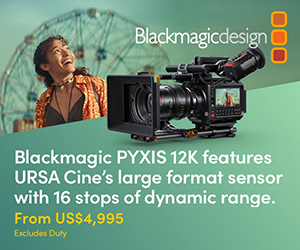FX Design Group CEO to present session at NAB
Weekly insights on the technology, production and business decisions shaping media and broadcast. Free to access. Independent coverage. Unsubscribe anytime.
With the ever-increasing rate of change that is affecting the broadcast industry, the team at FX Design Group, led by CEO/Creative Director, Mack McLaughlin, constantly asks What’s Next, as they focus on providing broadcasters with designs that communicate successfully to television viewers. In advance of commissioning a second research study on viewers’ preferences, FX CEO/Creative Director, Mack McLaughlin has been tapped to provide his insight into the future of broadcasting at the 2012 NAB Military Government Summit. McLaughlin, along with Frank N. Magid Associates Senior VP, Marv Danielski, will provide content and commentary covering Trends, Tools and Viewer Expectations of the Next Gen Newscast.
The session Case Study #1: Back from the Future! Delivering the News in 2020 is scheduled to be held from 9:00 – 9:30 a.m. on Thursday, April 19, 2012 in the Las Vegas Convention Center, Room S225. McLaughlin will also participate in a panel discussion with 5 other presenters covering the same content from 11:45 – 1:00 p.m.
The session begins with the premise that FX and Magid have brought back intel from the future of television. They will share how news delivery and presentation will change in the future, including, on-camera technology and the integration of Social Media into newscasts, focusing on cutting edge trends, what viewers expect and what is effective at connecting with this audience, to help broadcasters effectively invest in and plan for the future.
For the Back from the Future session, Danielski will be fittingly brought in remotely by technology. And this style may become an important part of the newscast in the future – one station, KOMU-TV, is currently doing a news cast this way – bringing in reporters and guests via Google+
Many of us probably remember Max Headroom, the first computer-generated TV Host – introduced in the 1980’s. This may be what we are destined for. However, many experts disagree as they concur, talent still matters, as viewers connect with talent, and in an earlier FX-commissioned research study that Magid conducted, talent is the number one reason to watch.
Another trend is Social Media – and the incorporation of social media into the newscast. For example, KIRO-TV recently presented #KIROConnect with Jenni Hogan which crossed a traditional TV special with Social Media to offer viewers ways they could utilize social media platforms and apps, it also called on viewers to interact in real-time via platforms like Facebook and Twitter.
With explosion of applications such as Twitter, Facebook and Pinterest, and the fact that a growing number of people are connecting through social media, the integration of social media and television will continue. It gives broadcasters an opportunity to connect with viewers and have a two-way conversation – thereby engaging the viewers directly and consequently building loyalty – a big change for broadcasters who are used to a one-way conversation.
What’s Old is New Again – Virtual Sets that made their debut in the 1990’s were very cartoonish and not suitable for a credible newscast. However, with the technology improving and becoming more affordable, and the power to crunch out polygons greatly improving – McLaughlin predicts that virtual sets will have a comeback. It’s difficult to even classify it as a comeback since the designs will be light years ahead of where they were aesthetically.
The challenge is that the designs that are out there currently seem to be driven by technology for technology’s sake. “Basically the tech guys are creating the designs for what looks cool rather than with the aesthetics of great design,” says McLaughlin. Ideally a professional set designer, for example FX’s Glenn Anderson, who is known for his photo-realistic designs, would design a set that would create a credible background. The technology should make it easier, not technology for technology’s sake. Don’t make it about the tech – or you will lose” adds McLaughlin. “It is about knowledgeable people delivering quality stories – not about how you get the story. Don’t focus on the platform, tell good stories and you will win. It’s about effective communication and connection – and the content. You have to deliver it faster, better, cheaper and that is where the technology comes in.
FX has always approached design in a research-based, logical way, focusing on what viewers prefer. In 2010, to provide hard data for that approach, FX commissioned Magid to conduct a landmark research study on viewers’ preferences, especially focusing on HD – results of that survey were conclusive and still provides data-driven direction to FX’s designs. However, so much has changed with television viewing habits that a follow-up study is planned for this year.
FX Design Group is an advertiser on NewscastStudio.




tags
FX, FX Design Group, FX Group, NAB, NAB Show News
categories
Branding, Local News, Mobile, NAB Show, Online and Digital Production